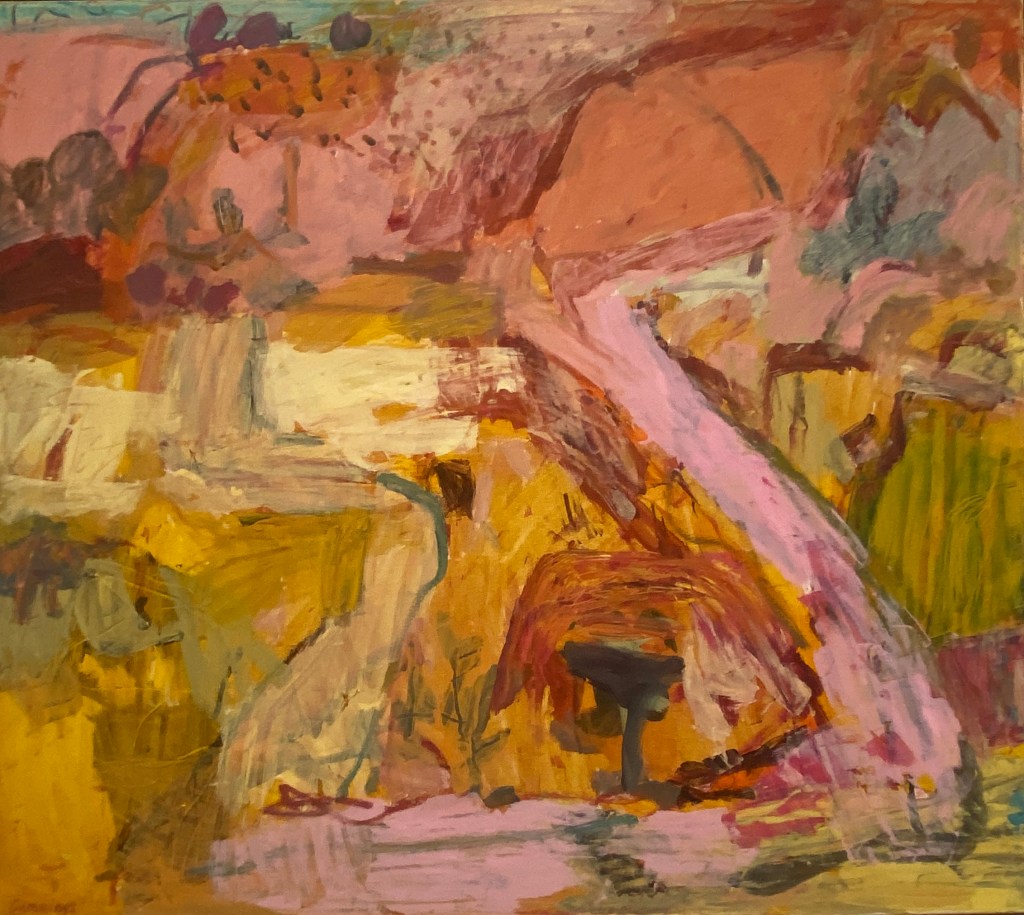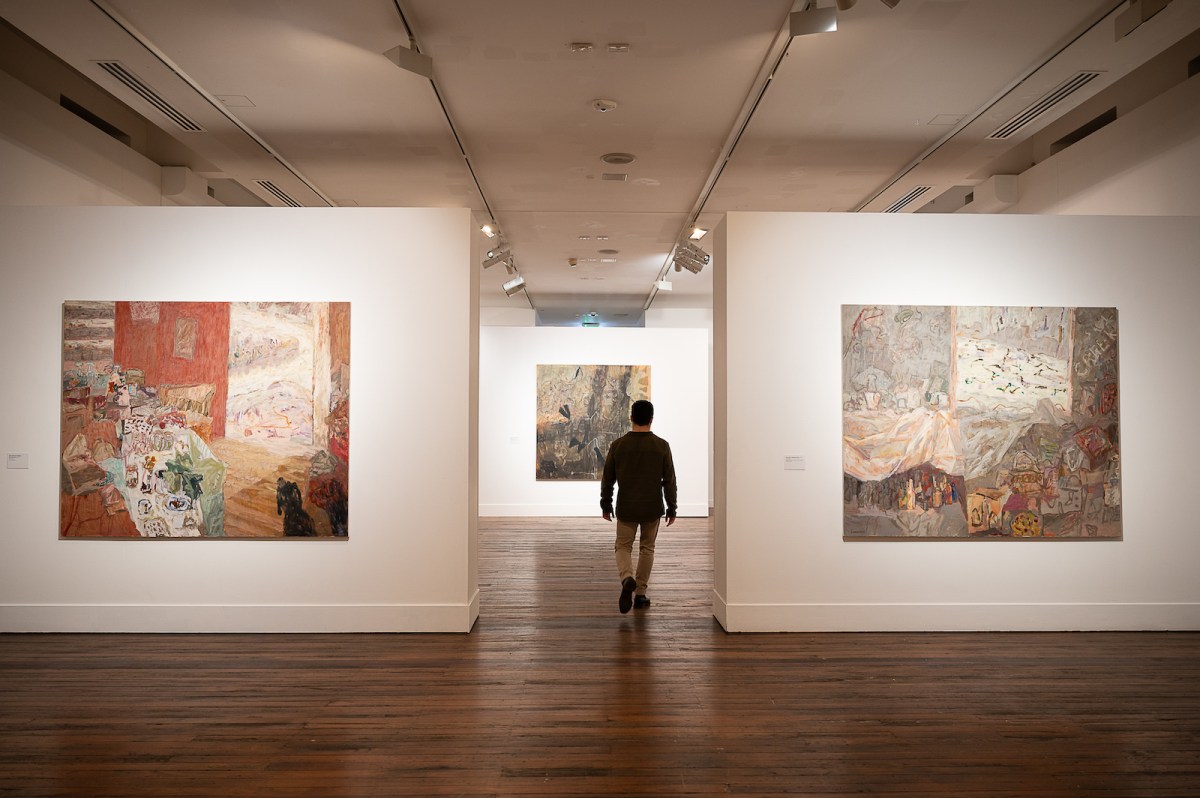Many would agree, Elisabeth Cummings is legendary. At the opening of her exhibition Radiance, students – current and past – gathered around her almost reverentially, the kind of emotion reserved for meeting dignitaries. Moving through this expansive survey exhibition at the National Art School (NAS) Galleries – Cummings’ alma mater – it is easy to understand why. Her work is the very definition of a committed painting practice – and it’s palpable.
Two words come to mind: prolific and brave. Now at 89, Cummings is painting as fiercely as she was when she was fresh out of art school in the 1950s. Time is an interesting element within this show. On one level, such a vast body of work speaks to the time given to honing one’s own visual language. Time is also a silent partner in these images, which are often created from memories of a place. And time also is a factor when considering these works in the context of art history, and the visibility of women artists.
The exhibition is not hung chronologically; rather it has a loose thematic map: interiors in the downstairs gallery and landscapes upstairs. Both are about place. For an undiscerning eye, however, it’s easy to move across this complete body of a career’s work with a seamless synergy.
Many of the works have been painted en plein air – including a suite of gorgeous studies in gouache – or use those moments in the landscape, capture them in drawings and then realise them in the studio.
What is apparent walking through this show, and its vibrant palette of rich reds, ochres, a milky misty grey and lashing of white – which come to life through fluid gestures and abstracted forms – is a freshness and a sustained confidence in Cummings’ mark making.
While she has been quoted saying, ‘it has been slow finding a voice of my own’, this struggle with the canvas is not obvious. Rather, her wrestle with the mark becomes part of that voice, as the paint is scratched into, scraped back, overpainted. It is that journey of painting that she has faced day in and day out for seven decades, and why she is so admired and beloved.
More than 55 paintings shape out that journey, pulled together from public and private collections. Among the highlights are Journey through the studio (2004), an expansive painting that sets the tone in the first gallery. A room becomes a composition of planes of colour and loose lines, abstracted and yet still recognisable.
Deeper in the hang in the lower level is the painting Summer window, Currumbin (2004), which in contrast demonstrates Cummings’ capacity of colour shift. Both works demonstrate the artist’s prowess in reading space, and the beauty of overlooked intimacy of interiors. Summer window, Currumbin sits within sight of Wedderburn moonlight (2015), again changing palette and taking the scene to another level of abstraction.
As viewers move through the exhibition to the upper levels of the gallery, among the standout works that punctuate the experience of the show are the expansive paintings Edge of the Simpson Desert (2011) with its explosion of colour, and After the Wet, Elcho Island (2004)
In an essay in the exhibition book, curator Sioux Garside compares the latter painting at Galiwin’ku/Elcho Island and Early morning Osborn Bay, Kimberley (2018) with the work of the great atmospheric landscape artist JMW Turner, Cummings’ paintings being equally sensory in their observation of nature.
They don’t aim to be rigorously representational. They are drenched in light, and love. Cummings has travelled extensively, living in Italy for nearly a decade in the late 1950s, to remote Country in Australia, and her beloved home of Wedderburn in Sydney’s south-west.

Read: Exhibition review: Jemima Wyman, Sullivan+Strumpf, Melbourne
For this writer, there is a painting that sums up Cummings, and is a sure winner that seems to encapsulate her brave determination and knowing. From the two tanks (Fowlers gap) (2012) is a mid-scale work with its flowing pink river carving up the picture plane of punchy ochres. It almost pulses with intensity, in what curator Vivienne Webb describes in the exhibition’s accompanying monograph as an ‘emotional charge that defies description.’
Walking around this exhibition, viewers feel both humbled and uplifted. Seeing the sheer volume of works corralled here together, it is easy to recognise how Cummings has constantly challenged her making – and the magnitude of that journey. It is, quite simply, profound.
Radiance: the art of Elisabeth Cummings
18 August to 21 October
NAS Galleries, National Art School, Darlinghurst (NSW)
Curated by Vivienne Webb
Free





